Key Takeaways
- Adult fleas without a host typically die within two weeks.
- Flea eggs and larvae can survive several weeks hidden deep in carpets.
- Pupae can remain dormant for months, making infestations tough to eliminate quickly.
- Regular vacuuming, steam cleaning, and targeted flea treatments are essential.
- Prevention, vigilance, and regular inspections help keep fleas from returning to your carpet.
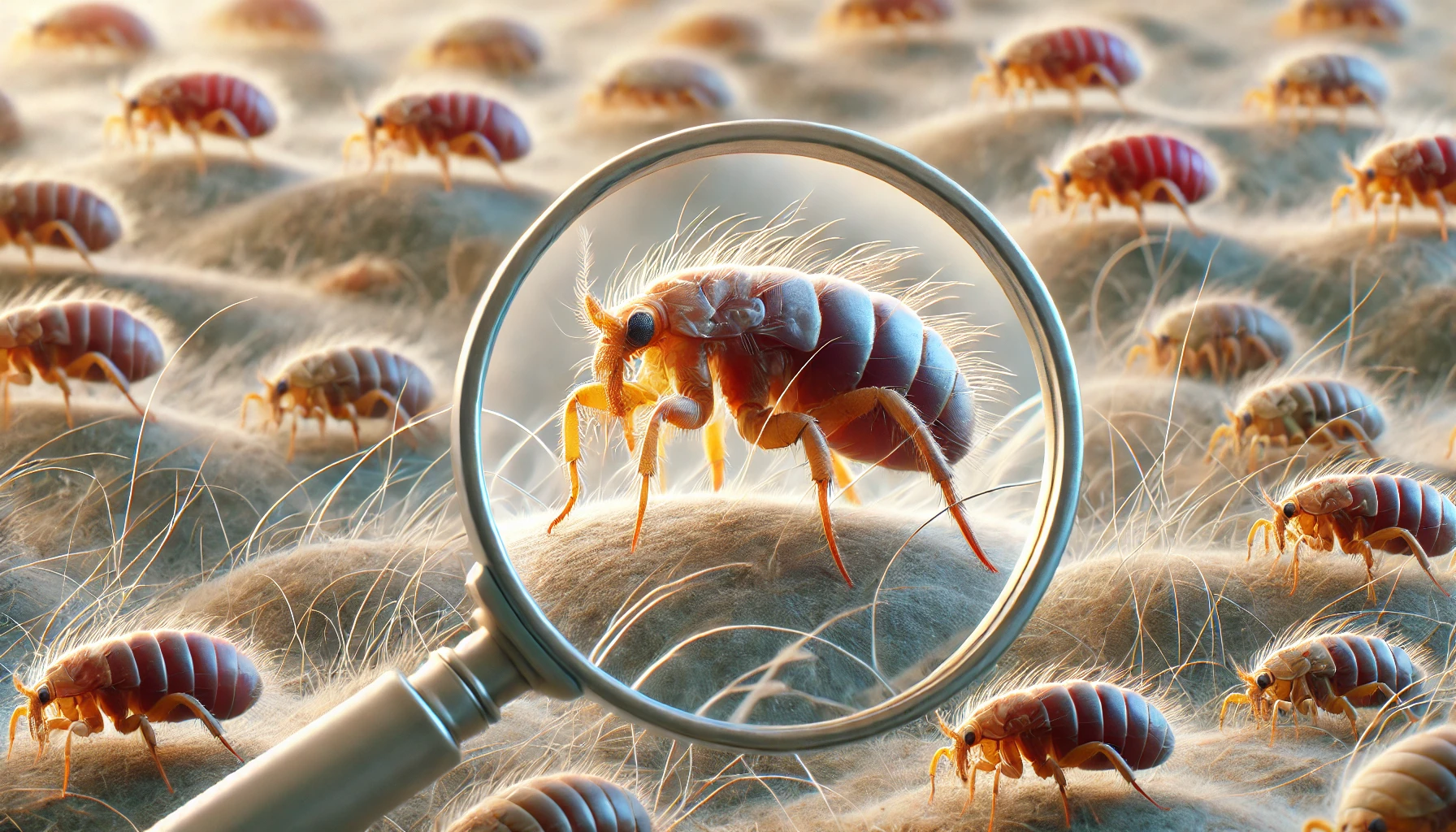 Have you noticed tiny, itchy bites around your ankles or caught small insects hopping off your carpet unexpectedly? You might be dealing with fleas—yes, even if you don’t have pets. Fleas are sneaky little pests, and carpets are their favorite hiding spot. But how long can they survive on your carpet without a pet around? Honestly, it’s longer than you’d expect.
Have you noticed tiny, itchy bites around your ankles or caught small insects hopping off your carpet unexpectedly? You might be dealing with fleas—yes, even if you don’t have pets. Fleas are sneaky little pests, and carpets are their favorite hiding spot. But how long can they survive on your carpet without a pet around? Honestly, it’s longer than you’d expect.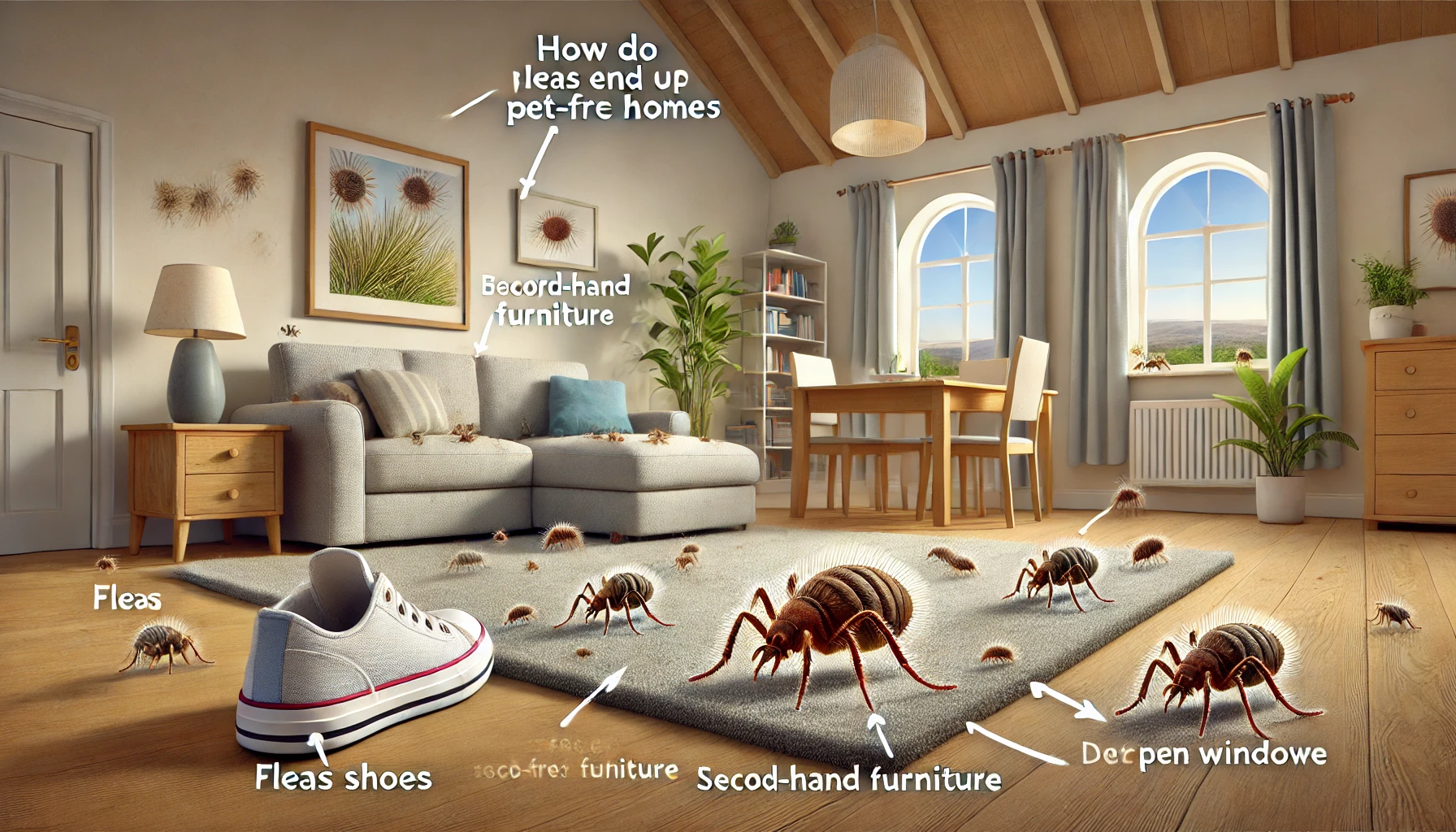
How Do Fleas End Up in Pet-Free Homes Anyway?
You might think your home is safe from fleas because no furry friends are around, right? Unfortunately, fleas don’t just hitch rides on pets. They can sneak in on clothing, shoes, or even through visits from friends who own animals. Even worse, fleas often linger in homes that previously housed pets, patiently waiting for the next potential host. Sneaky, isn’t it? You might have even unknowingly brought them home after a walk in the park or visiting a friend’s flea-infested home.
Just How Long Can Fleas Live Without a Host?
Adult fleas are seriously dependent on blood meals—without access to animals, these little vampires usually die off in a few days to two weeks. But here’s the thing: this only tells half the story. Do you know why? Because flea eggs, larvae, and pupae can stick around in your carpet fibers for weeks or even months without feeding.Flea Eggs and Larvae: Carpet Invaders
Flea eggs are tricky—they drop from adults onto carpets, rugs, and bedding, hatching into tiny larvae within days or weeks. These larvae are more challenging than you’d think. They feast on organic debris (think skin flakes and flea dirt), not blood, allowing them to survive comfortably for two to three weeks, hidden deep within your carpet. And honestly, that’s a lot longer than anyone wants uninvited guests hanging around. Larvae thrive in dark, undisturbed areas like underneath furniture, inside rugs, and around baseboards, making them even harder to spot and eliminate.Flea Pupae: The Unexpected Guests
Pupae are by far the most challenging stage in the flea lifecycle. These sneaky pests form cocoons buried deep in carpet fibers, lying dormant for weeks—sometimes even months. They’re not in any rush; they just wait quietly for signals like vibrations, warmth, or carbon dioxide from potential hosts before emerging as adults. It’s creepy and explains why fleas might mysteriously reappear months after you thought they were gone. When you thought you were flea-free, they pop back up, surprising you again.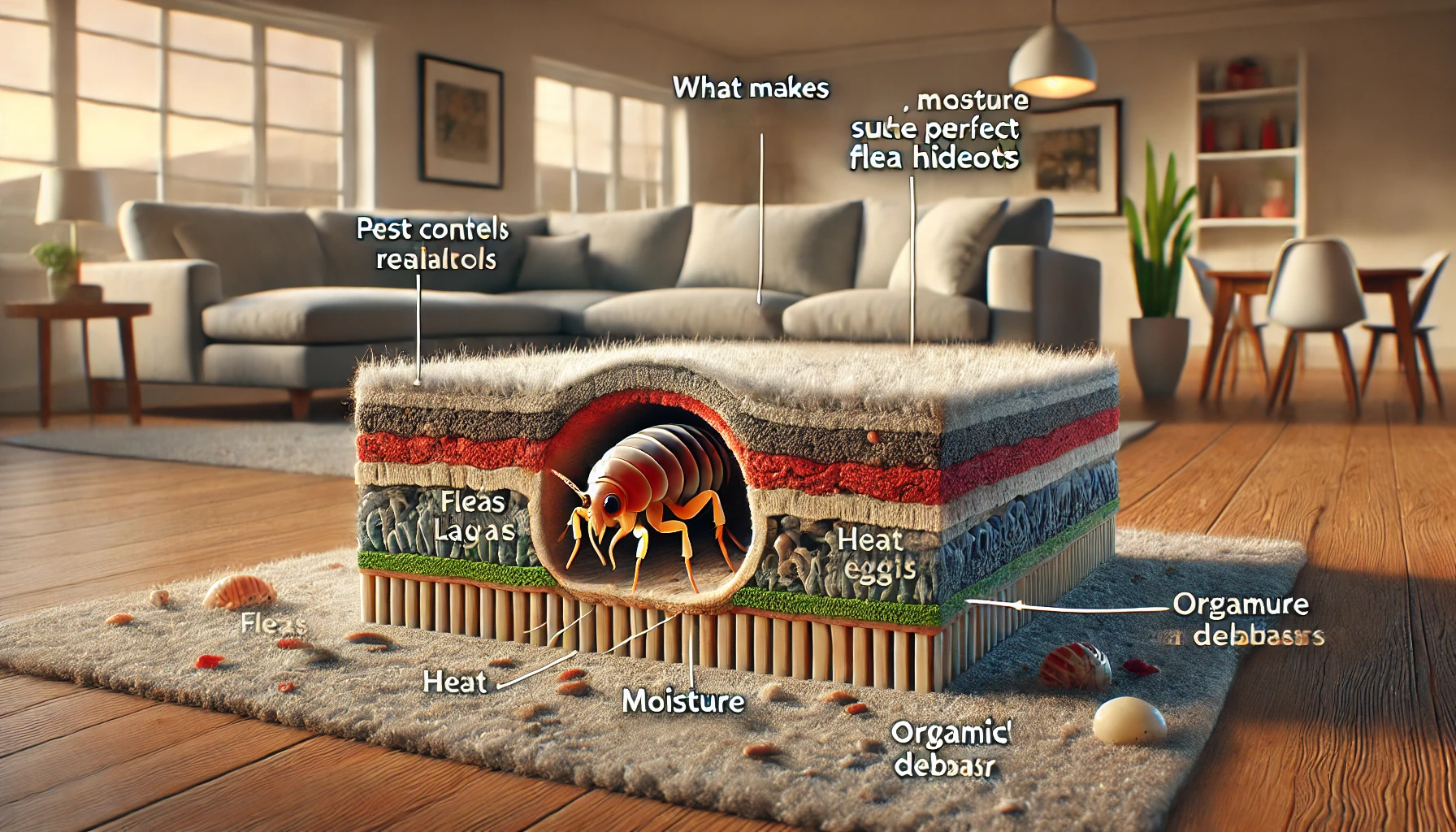
What Makes Carpets Such Perfect Flea Hideouts?
Carpets are flea paradises—warm, dark, and humid enough to keep fleas comfortable. The dense fibers shelter all flea stages, from eggs to pupae, making them resistant to casual vacuuming or essential cleaning. Basements, family rooms, bedrooms—anywhere with carpet is at risk of becoming a cozy flea retreat. Think of carpets as the flea equivalent of a five-star hotel, providing everything these pests need to wait comfortably for their next meal.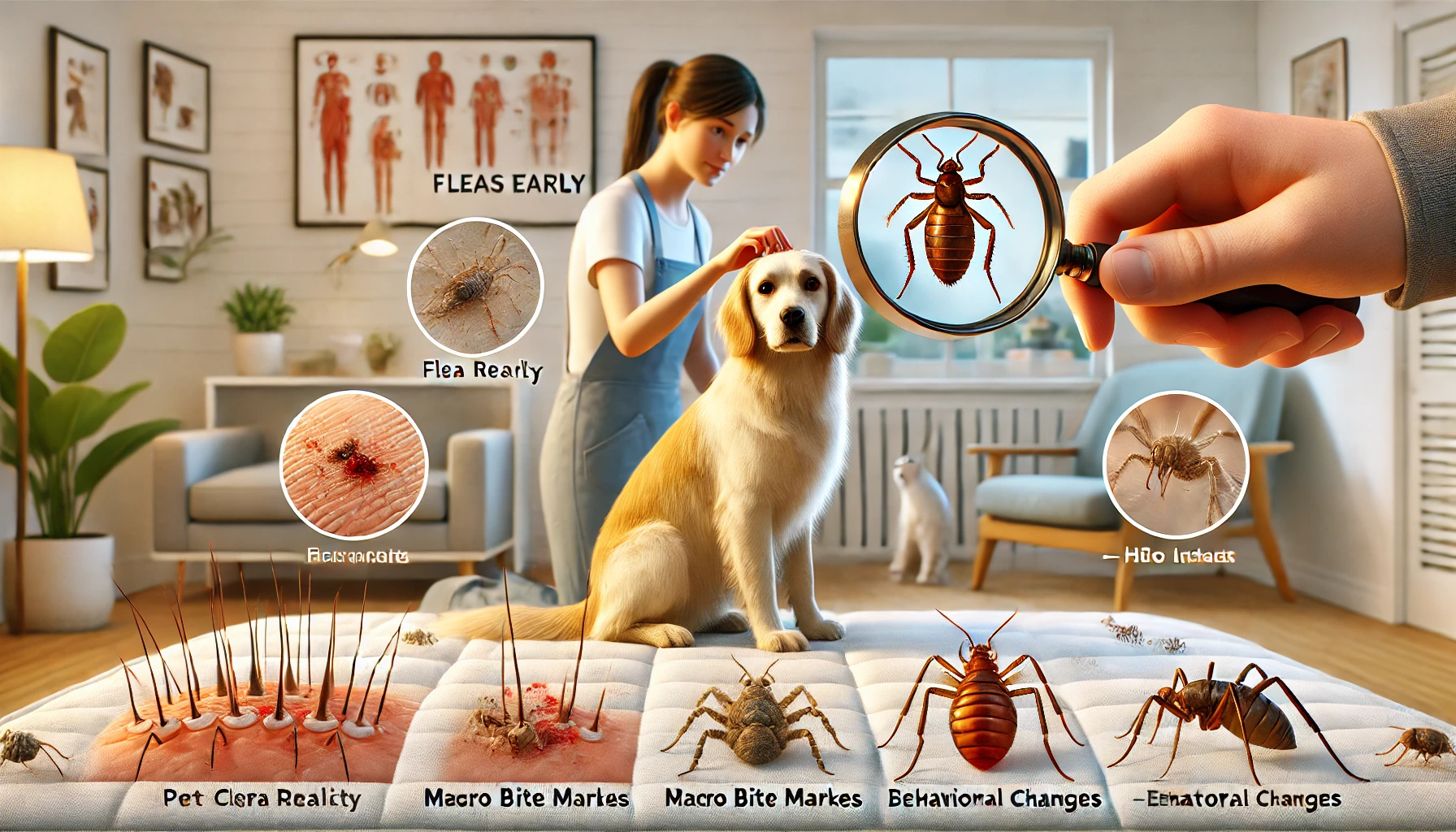
Spotting Fleas Early—What to Look For
- Identifying fleas early is key to avoiding a nightmare infestation. Here’s a quick rundown:
-
Jumping Pests: Tiny, fast-moving fleas can be seen hopping on carpets, furniture, or even your pets—an unmistakable sign of their presence.
-
Flea Dirt: Resembles black pepper scattered in pet bedding or carpets—actually dried flea waste that turns red when wet.
-
Bite Marks: Itchy, red bumps typically found on ankles and legs are classic signs of flea bites.
-
Eggs or Larvae: Look for tiny white, oval eggs or thread-like larvae in carpet fibers, bedding, or pet resting areas.
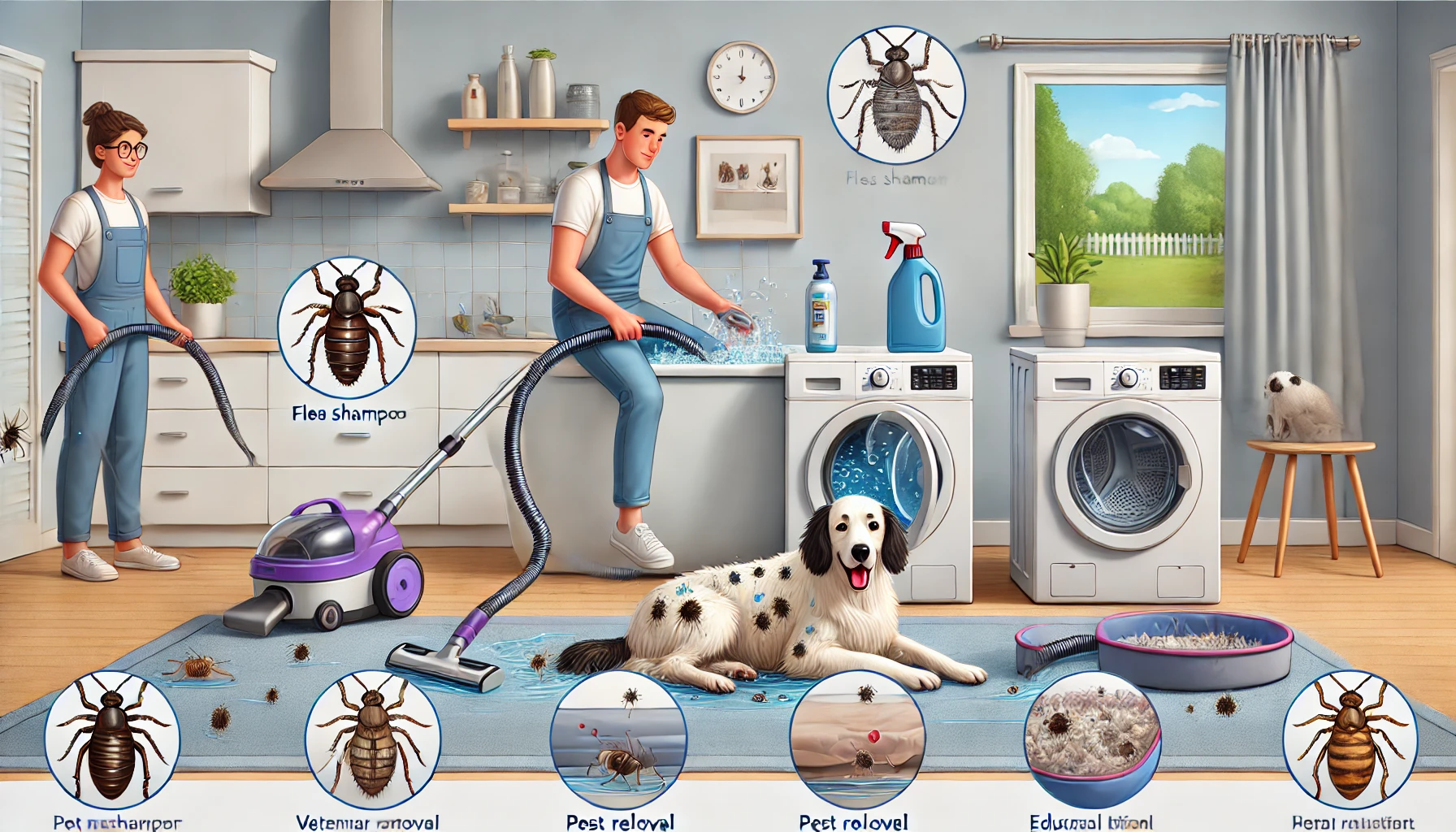
Winning the Battle: How to Get Rid of Carpet Fleas Fast
Don’t panic just yet—there’s a reliable method to reclaim your carpet from these pesky intruders:Step 1: Vacuum Like Your Life Depends On It Honestly, vacuuming is your secret weapon. Do it daily, targeting carpets, rugs, baseboards, and furniture undersides. This will not only remove adult fleas but also eggs and larvae. Remember to empty the vacuum bag outdoors immediately afterward to avoid re-infestation. Trust me, skipping this step could mean undoing all your hard work.Step 2: Steam Cleaning—A Real Game ChangerSteam cleaning doesn’t just freshen carpets—it annihilates fleas at every life stage. The hot steam penetrates deep, killing larvae and forcing pupae to hatch prematurely. Rent a machine or, better yet, bring the pros to do it right. Professional carpet cleaners know exactly how to tackle stubborn infestations.Step 3: Flea Sprays—Choose Wisely Use indoor flea control sprays featuring Insect Growth Regulators (IGRs)—these are specifically designed to halt the flea lifecycle, ensuring eggs and larvae never mature. Always follow the instructions closely to keep your family safe. Brands like Vet’s Best or Adams offer reliable products designed specifically for indoor flea control.Step 4: Hot Water is Your Friend Wash everything washable—throw rugs, curtains, bedding—in hot water (130°F or higher), then dry on high heat. Repeat if needed. Fleas hate hot water almost as much as you hate fleas.Step 5: Diatomaceous Earth—Nature’s Flea Fighter Sprinkle food-grade Diatomaceous Earth (DE) across carpets, gently brushing it in. Leave it 24–48 hours before vacuuming thoroughly. DE naturally kills fleas by dehydration, perfect if you’re wary of chemicals.Step 6: Keep an Eye OutStay vigilant after treatment. Regular vacuuming and occasional flea traps help ensure these little pests don’t return unexpectedly. If fleas persist, calling professional pest control might be necessary. Professionals have tools and treatments explicitly designed to handle severe infestations.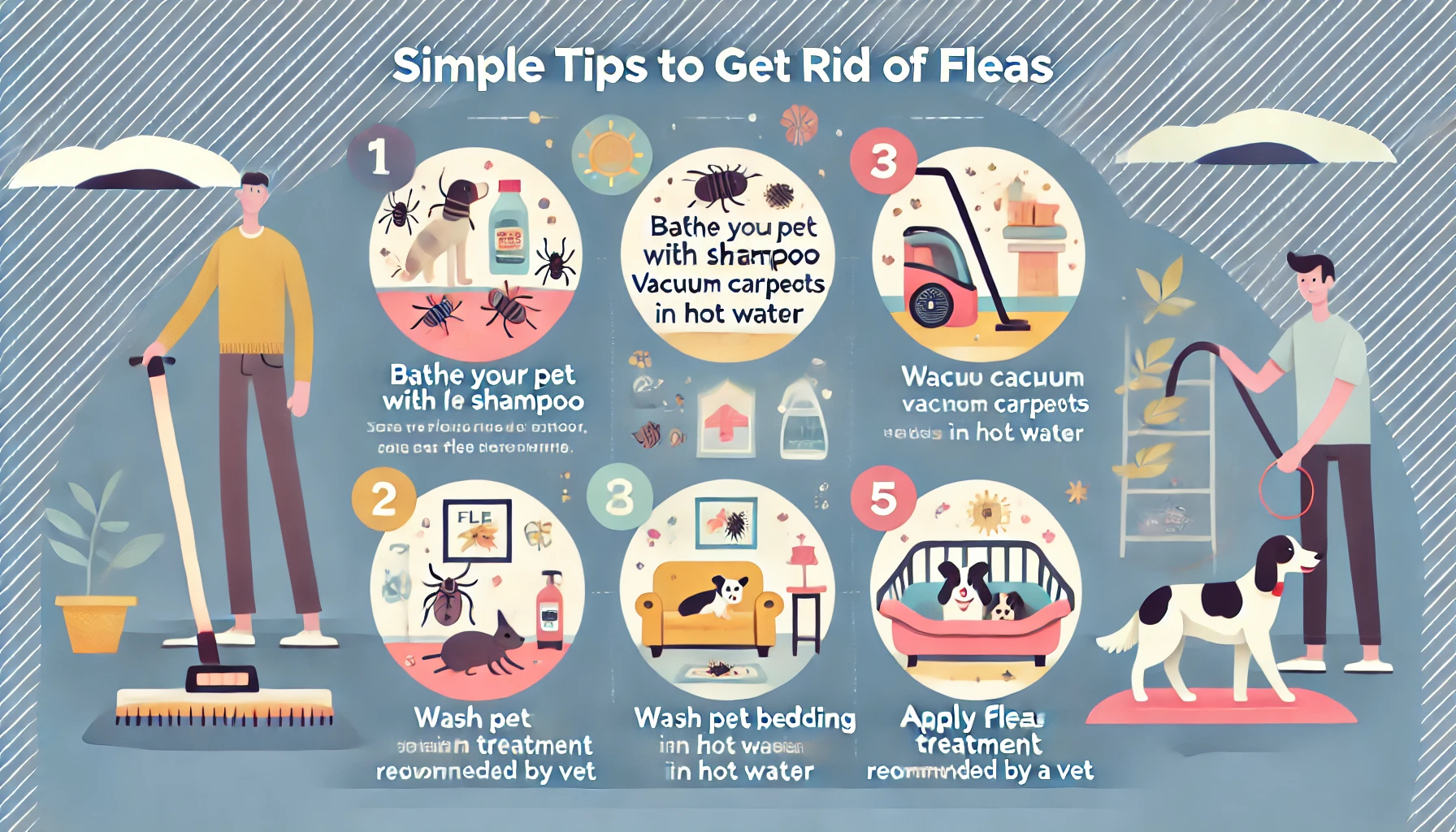
Keeping Fleas Out for Good
You don’t want to relive this flea nightmare, right? Keep these simple tips in mind:- Regular vacuuming and deep carpet cleaning are your best defenses.
- Keep your home dry and bright—fleas love dark, humid places.
- Always inspect used items before bringing them inside.
- Prevent rodents and wildlife from accessing your property—these critters are prime flea transporters.
- Use preventive treatments occasionally, mainly if your home frequently hosts pet-owning visitors or if you live in flea-heavy regions.
- Maintain good landscaping outdoors to reduce wildlife and flea habitats.
- Check yourself and family members regularly if visiting flea-prone areas, especially during warmer months.
- Educate your family and guests about flea prevention. Awareness goes a long way toward keeping fleas out of your home.
Visit our Species, Control, and DIY Guide sections for additional resources on flea and ways to tackle a flea infestation.





